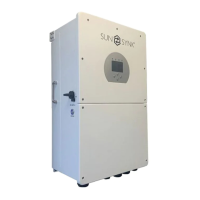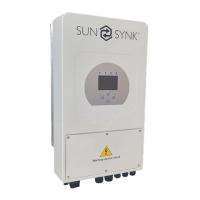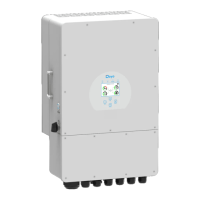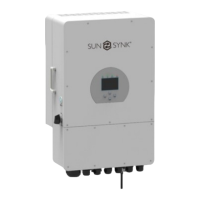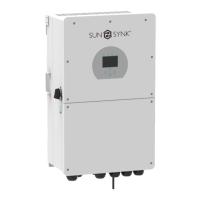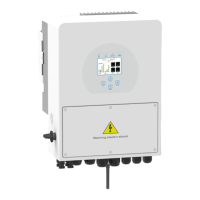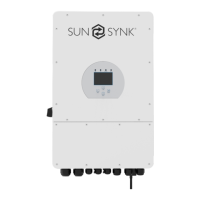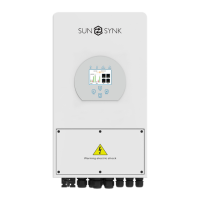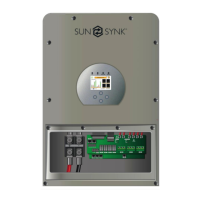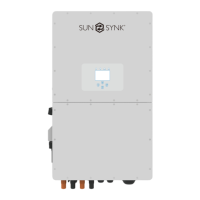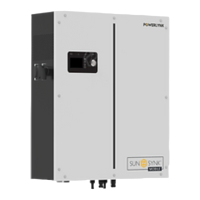
Do you have a question about the SunSynk LIFELYNK X SM3.6kWLL and is the answer not in the manual?
| Type | Hybrid Inverter |
|---|---|
| Rated Power | 3.6kW |
| Output Voltage | 230VAC |
| Efficiency | 97.6% |
| Max Solar Input | 4.5kW |
| Max. DC Voltage | 500VDC |
| Battery Voltage | 48VDC |
| Communication | RS485 |
| MPPT Range | 120-425V |
General safety guidelines for using the device.
Crucial safety warnings and precautions for installation and operation.
Explains warning symbols used within the manual for safe handling.
Explains warning symbols located on the product itself for user awareness.
Instructions for environmentally responsible disposal of the product.
Lists all items included in the product packaging.
Details the technical specifications and features of the Lifelynk X inverter.
Guidelines for choosing a suitable location to install the inverter.
Instructions and considerations for physically mounting the inverter.
Procedure for safely powering on the connected batteries.
Visual representation of the system's electrical connections and power flow.
Steps for connecting the inverter to the electrical grid and consumer board.
Instructions for correctly wiring the photovoltaic panels to the inverter.
Details on setting up the CT coil for power measurement and export control.
Configuration steps for operating multiple Lifelynk inverters in parallel.
Diagrams showing how to connect external batteries and inverters in parallel.
Explanation of the inverter's LCD screen layout and button functions.
Default settings for various system parameters like battery, system, and grid.
Lists the battery models compatible with Sunsynk Mobile Lifelynk Inverters.
Illustrates the operational flow and interaction between different system components.
Steps for turning the inverter system on and off.
Details the information displayed on the inverter's home screen.
Accessing and navigating the main settings menus.
How to configure basic system settings like time, date, and work mode.
Procedure to change the inverter's display language.
Configuring the inverter to comply with specific grid codes (G98/G99, VDE, NRS097).
Setting the inverter's operational mode (Standalone, Master, Slave).
Accessing and understanding production data logs for solar and grid.
Advanced configuration options for grid parameters.
Advanced configuration options for battery parameters.
Advanced configuration for system-wide settings like export control.
Advanced settings for controlling charge/discharge times and power.
Detailed settings for grid voltage, frequency, and mode.
Detailed settings for battery cut-off, charging, and float voltage.
Configuration of discharge current, trickle feed, export control, and night saving.
Explanation of UPS, Zero Export, and Sell modes for power export.
How to configure the inverter to sell excess power back to the grid.
Settings for charging the battery from the AC grid or PV.
Configuration for the earth neutral bond function.
How to enable and configure the night power saving feature.
Configuration for the UPS operating mode.
Configuration for the zero export operating mode.
Specific settings for the Night Power Saving mode.
Lists common error codes and their potential solutions.
Step-by-step guide for powering the inverter on and off.
Key checks and information needed for successful inverter commissioning.
Description of GFDI faults and impedance checks.
Regular maintenance tasks to ensure optimal inverter performance.
Guidance on selecting and using Residual Current Devices (RCDs).
